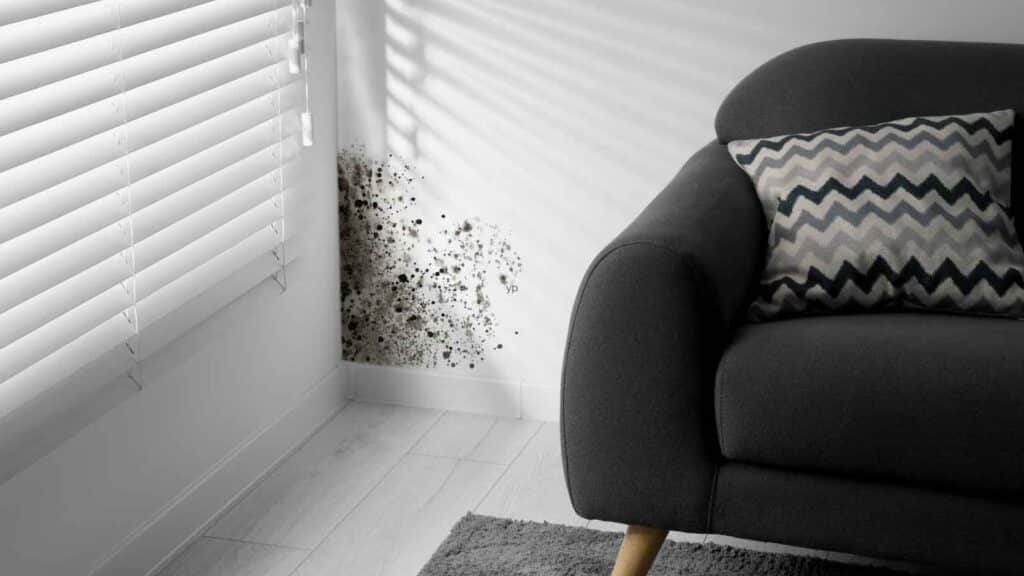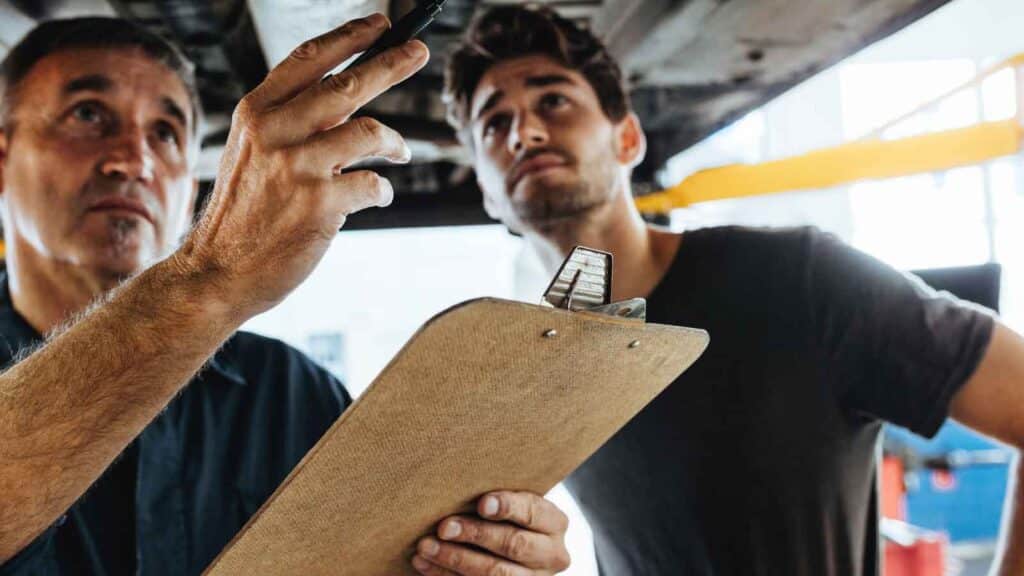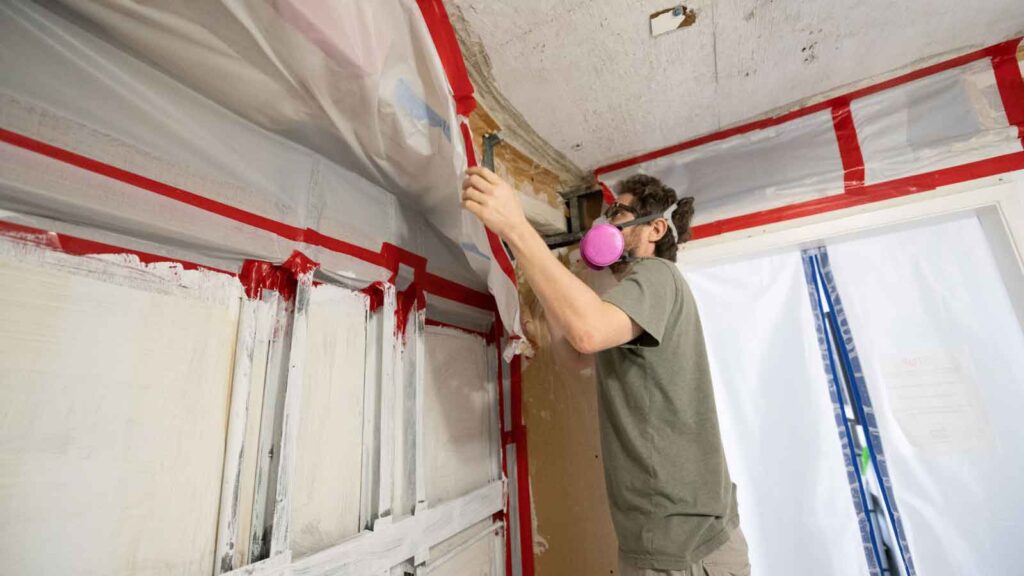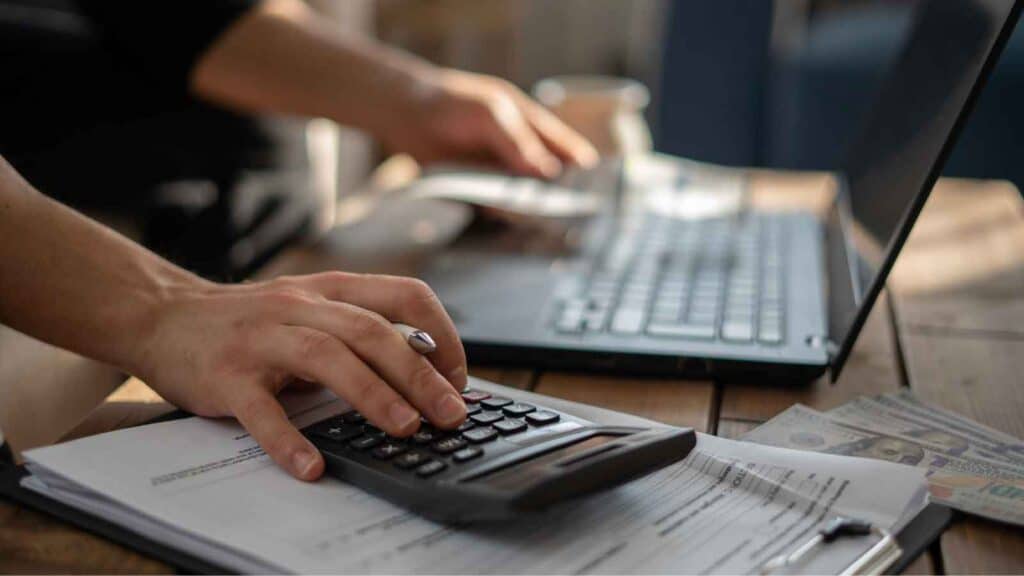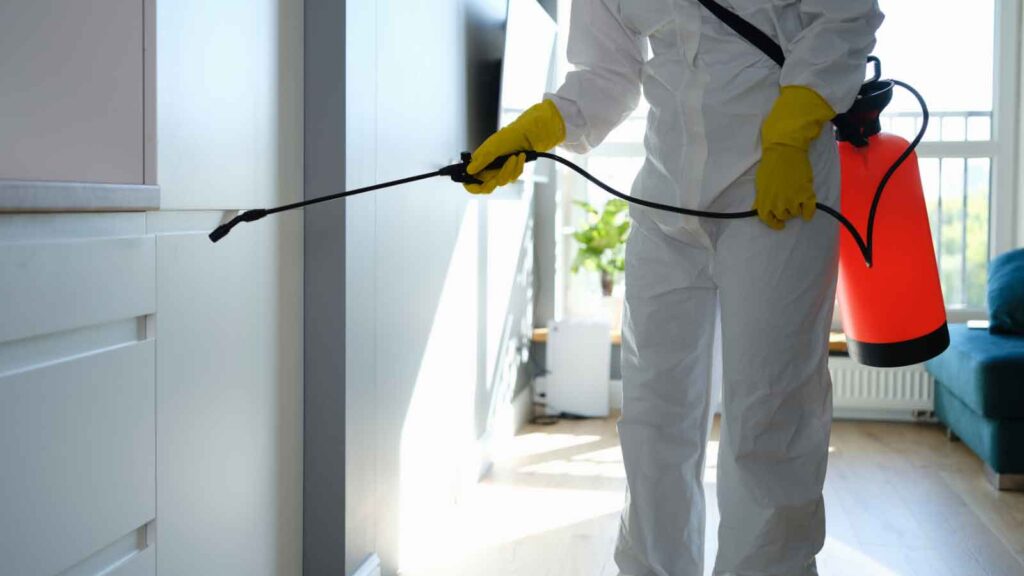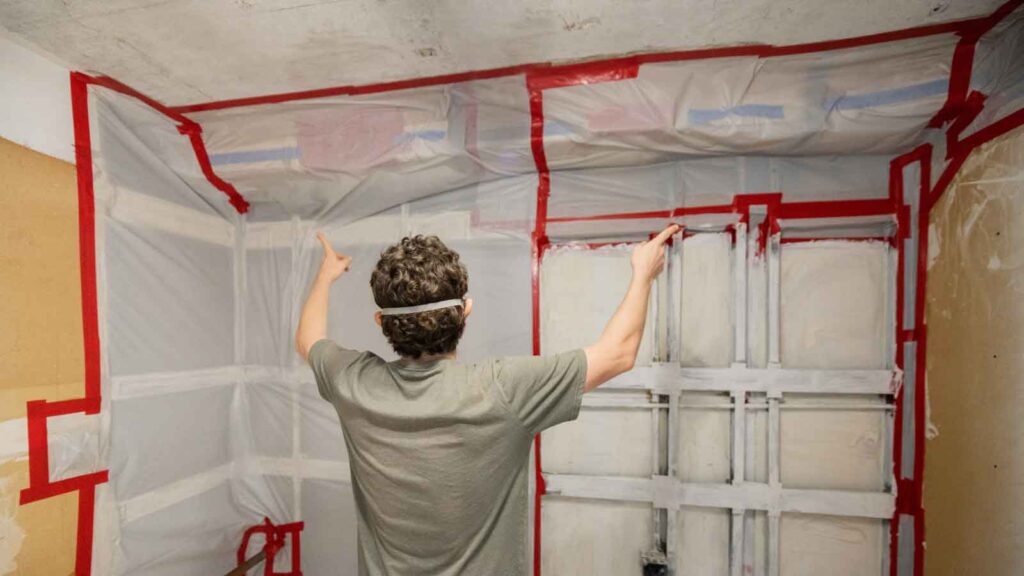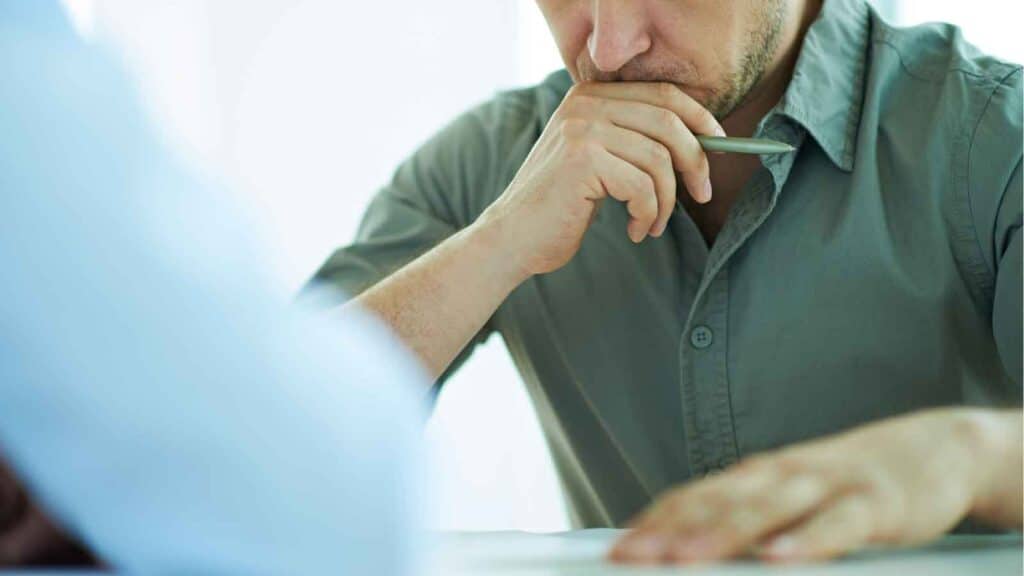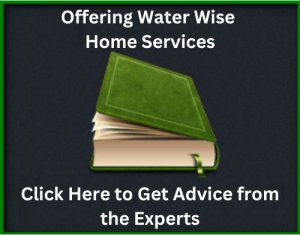Mold Remediation: A Comprehensive Mold Removal Guide of 2024
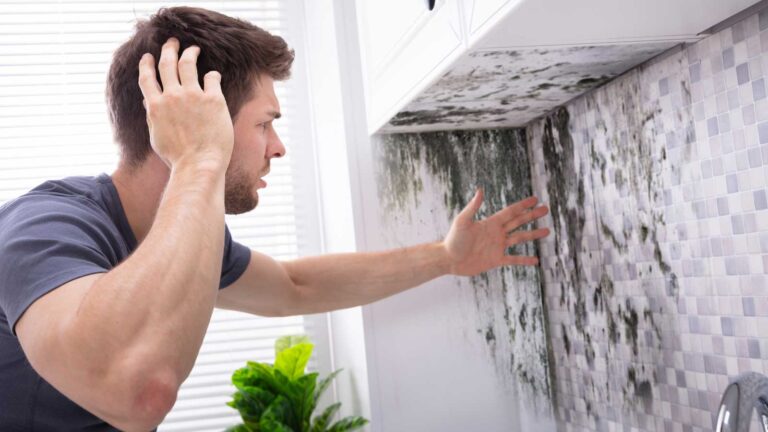
In maintaining your indoor environments safe and healthy, mold removal and remediation are critical considerations for any property owner or manager.
That’s because mold is a health and safety risk for various reasons. For one, it compromises the structural integrity of your spaces. Another more urgent concern is that it can trigger and cause allergic reactions and respiratory ailments.
Considering those significant risks, it’s clear that understanding and addressing mold issues is not just about property maintenance. It’s about safeguarding your health and the well-being of everyone who steps into your space.
Mold removal and remediation are essential services beyond the surface, tackling the unseen dangers lurking in damp corners and behind walls. This guide will give you insights on identifying, eliminating, and preventing mold.
Let’s start with the basics, such as the critical difference between mold remediation and removal, the common types of mold that plague houses, and tips to eliminate and prevent them.
Understanding Mold Remediation
First, let’s establish the difference between mold removal and remediation.
Mold removal focuses on the physical elimination of mold from an environment. It’s a reactive process that ends with the elimination of the existing mold infestation, so you can think of it as a reactive measure against mold. Mold remediation, on the other hand, takes the process a little further.
To be exact, mold remediation goes beyond removal to ensure the prevention of regrowth. It’s a comprehensive approach that addresses root causes, reduces air spore levels, and prevents mold regrowth.
Understanding the difference between both will help you determine the exact solution your property needs. Later, we’ll walk you through some specific techniques used in this process to help you better understand its importance in ensuring health and safety.
Types of Mold in Homes
Mold comes in different forms and with equally varying methods of elimination. Hence, accurate identification of the type of mold you’re dealing with is vital to successful remediation. There are many different types of mold; the most common of these are:
- Aspergillus is a mold commonly found indoors and thrives on damp walls, insulation, and old furniture. It has a powdery appearance, with colors ranging from green to black. Professionals will use high-efficiency particulate air (HEPA) vacuums and antimicrobial treatments to combat this mold.
These tools and techniques are combined to improve indoor humidity and ventilation to prevent future growth.
- Cladosporium has an olive-green to brown or black appearance and grows on fabrics, under floorboards, and inside cabinets. It is quite resilient and can grow at cooler temperatures than other molds.
Remediating this type of mold requires HEPA-filtered vacuums and fungicides, repairing leaks and improving air circulation.
- Stachybotrys chartarum, often referred to as “black mold,” this type is notorious for its slimy texture and dark color. It thrives in constantly moist environments, such as leaky pipes or flood-damaged materials.
Due to its potential toxicity and production of mycotoxins, removal requires strict containment and specialized removal techniques. These techniques involve using personal protective equipment (PPE), HEPA vacuums, and antimicrobial agents to ensure complete eradication and safety.
Our next important step is conducting an inspection and testing for mold.
Mold Inspection and Testing
Inaccurate and cursory inspections are detrimental to remediation efforts. Should these fail, mold infestations prevail, and you waste time and money on ineffective solutions. Avoiding these requires choosing the right mold inspector from the get-go.
As a guide, however, below is an overview of the steps experts will take to ensure a thorough and accurate inspection. This checklist can serve as your guide to ensure that mold inspectors follow each step and correctly assess your mold issue.
- Initial assessment.After you contact a professional inspector, they will begin the remediation process with preliminary information gathering. They’ll check for specific markers that point to a mold issue, like visible infestations, areas of moisture intrusion, and any health symptoms residents may be experiencing due to exposure.
- On-site inspection. Next, the inspector visits your property to conduct a thorough examination. Here, they visually inspect areas prone to mold growth, such as basements, bathrooms, attics, and places around water sources like sinks and water heaters. The inspector looks for signs of growth, water damage, and moisture that promote mold.
- Moisture and humidity assessment. Using specialized tools like moisture meters and hygrometers, the inspector measures moisture levels in walls, floors, ceilings, and air humidity levels. These measurements help identify potential mold growth areas not visible during the visual inspection.
- Sample collection. If mold is visible, surface samples are taken using tape lifts or swabs. Air samples may also be collected to assess the concentration of mold spores in the indoor environment.
- Laboratory analysis. Collected samples are sent to a certified laboratory for analysis. The lab identifies the mold species and quantifies the spore count in air samples. This step is essential for understanding the severity of the issue and potential health risks.
- Report and recommendations. The inspector compiles and reports back the findings of the analysis to you. In this report, they’ll include information like the specific type of mold and offer tailored recommendations for remediation and preventing future mold growth.
- Post-remediation testing. Post-remediation tests will ensure that the mold has been thoroughly removed and that spore counts are safe. This step verifies the effectiveness of the remediation efforts.
Mold Remediation Techniques
As mentioned in the previous section, mold remediation techniques vary depending on the type of mold. However, depending on the extent of the infestation and the surfaces affected, additional and specialized techniques might be combined with others.
Professionals will typically combine any of the following techniques to ensure that your mold issue is eliminated and prevented:
- Containment.Professionals use containment methods to prevent the spread of mold spores during remediation. Affected areas are sealed off with plastic sheeting, and negative air pressure machines control air flow. This technique protects unaffected parts of your property.
- Air filtration. HEPA filters clean the air of mold spores and other particulates. Air scrubbers and HEPA vacuums ensure that air remains clean and prevent the spread of spores during the remediation process.
- Mold removal. The removal process depends on the surface where the mold is growing. Non-porous materials (like metals and glass) can be cleaned using antimicrobial agents. On the other hand, porous materials (like drywall and insulation) must be removed and replaced, as mold can infiltrate deep into the material.
- Antimicrobial and antifungal treatments. After physically removing the mold, professionals apply antimicrobial and antifungal agents to eliminate any remaining mold and prevent future growth. This step ensures that the mold doesn’t return shortly after remediation.
- It is drying and dehumidification. Moisture control is critical in mold remediation. After removing the mold, the area must be dried and dehumidified to remove excess moisture. This step is crucial to prevent the recurrence of mold, as mold thrives in moist environments.
- Repair and restoration. The final step involves repairing or restoring the areas damaged by mold or the remediation process. This may include installing new drywall, painting, and replacing carpets or other materials removed during mold removal.
- Sanitation of contents and belongings. Items in the affected area that can be salvaged are cleaned and sanitized. This includes furniture, curtains, clothing, and decorative items. HEPA vacuums, antimicrobial sprays, and other cleaning methods ensure that items are mold spores-free.
Preventing Mold Growth
Effectively preventing mold doesn’t rely on the experts alone. To keep your houses and properties safe from infestations, you can also employ practical methods to ensure it.
Here are our expert tips for doing so:
- Use dehumidifiers in damp areas. Keeping indoor humidity levels in check is one of the critical measures to prevent mold growth. With the help of humidifiers, we seek to maintain humidity levels between 30-50% to reduce the risk of growth. Additionally, keep your home well-ventilated and use air conditioners during humid seasons.
- Check for and fix leaks regularly. Water leaks from pipes, roofs, or windows can create ideal conditions for mold to flourish. Addressing these as soon as they’re detected prevents moisture accumulation. Pay extra attention to bathrooms, kitchens, and basements.
- Use exhaust fans to ensure proper ventilation. Airflow is essential to moisture control, and exhaust fans help facilitate this. Keep air circulating by using standing fans or simply keeping windows open when the weather is fair.
- Use mold-resistant products. These products are designed to resist moisture, making them less susceptible to mold growth. Strategically use mold-resistant drywalls, paints, and insulation materials that can be used in moisture-prone areas to prevent development.
- Dry wet areas and address water damage immediately. Mold can grow within 24-48 hours in damp areas. Promptly drying any wet areas, whether from leaks, spills, or condensation, is essential in preventing mold.
- Improve outdoor drainage systems. Poor outdoor drainage can accumulate water around your home’s foundation, increasing moisture and promoting mold growth. Ensure your home’s landscaping slopes away from the foundation. It also helps to lean gutters regularly and extend downspouts to direct water away from your home.
- Clean and maintain HVAC systems. As these can harbor and spread spores, keeping these maintained is critical to preventing mold growth. Regularly clean drip pans and ensure drain lines are clear. Replace filters as recommended by the manufacturer. Consider professional cleaning for ductwork if you suspect mold growth.
Mold Remediation Costs
The cost of mold remediation services can vary widely depending on specific factors. The severity of the infestation, the size of the affected area, and the techniques required to address the issue all contribute to the overall bill.
Understanding these factors can help you budget accordingly for any mold remediation needs now or in the future, as well as guide you in choosing professionals to work with.
Factors That Influence Mold Remediation Costs
Below are the specific factors that will affect the cost of your mold remediation. Remember that these are all considered during the service providers’ initial and on-site assessments. Their recommendations show you can expect a complete and transparent breakdown of these costs.
- Extent of mold infestation.The size of the mold infestation is the most significant factor affecting cost. Larger areas of mold growth require more labor, materials, and time to remediate, naturally leading to higher costs. In contrast, small spaces will cost less to remediate.
- Location of the mold. Molds in hard-to-reach areas or within HVAC systems bump up costs because they require additional labor and specialized equipment to treat.
- Type of mold. Some types of mold are more challenging to remove or require special handling, affecting the cost of remediation. For instance, toxic molds like black mold necessitate more stringent containment and safety measures.
- Material affected. The type of materials mold has infested influences remediation costs. Porous materials like drywall and carpet often need to be removed and replaced, while non-porous materials might be cleaned, affecting both cost and approach.
- Moisture source. Addressing the source of moisture that allows mold to grow is crucial to prevent recurrence and can influence the overall cost. Fixing leaks or improving ventilation can add to the expense.
- Professional services. The expertise and reputation of the mold remediation service provider play a role in cost determination. Certified professionals may charge more but can ensure a thorough job.
- Geographical location. Labor and service costs vary by region, influencing the overall cost of mold remediation. Urban areas with a higher cost of living may see higher prices for remediation services.
Health Risks Associated with Mold
Mold infestation is a health concern. This is the foremost reason we assert the importance of expertly delivered mold remediation services.
Mold and its spores primarily affect your respiratory system, making the matter an urgent concern for health authorities and mold remediation experts. Specifically, molds can lead to or aggravate:
- Allergic reactions. Many people are sensitive to mold spores and can experience allergic reactions when exposed to them. Some reactions manifest in mild symptoms like sniffles or itchy throats, while others need immediate medical attention.
Severe allergic reactions or anaphylaxis can occur in susceptible individuals and can threaten their lives.
- Asthma attacks. For individuals with asthma, mold exposure can trigger respiratory attacks. Mold spores irritate the airways and trigger symptoms like wheezing, coughing, shortness of breath, and tightness in the chest.
Asthmatics may experience increased frequency and severity of attacks when exposed to mold, emphasizing the need for a mold-free environment.
- Respiratory infections. Some molds can cause respiratory infections, especially in individuals with weakened immune systems. These infections can range from mild to severe and affect the lungs and breathing.
People with chronic lung illnesses or compromised immune systems are at a higher risk of developing mold-related respiratory infections.
- Toxic effects. Certain types of mold produce mycotoxins — poisonous substances that can lead to more severe health effects when inhaled. Symptoms can include nausea, fatigue, headaches, and, in severe cases, neurological damage or bleeding in the lungs.
Exposure to high levels of mycotoxins from certain strains like black mold can pose significant health risks, particularly in enclosed spaces with poor ventilation.
- Chronic inflammatory response syndrome (CIRS). Prolonged mold exposure can lead to CIRS, a condition characterized by a wide range of symptoms, including chronic fatigue, weakness, headaches, and memory problems, due to an abnormal inflammatory response.
CIRS requires medical diagnosis and can be challenging to treat, highlighting the importance of addressing mold issues promptly to avoid long-term health consequences.
Recognizing these health risks underscores the importance of timely mold detection and remediation to protect the health and well-being of occupants in mold-infested environments.
Hiring a Mold Remediation Professional
Absolute Maintenance & Consulting stands out as a leading professional when effectively addressing mold issues. Hiring a qualified mold remediation professional ensures that the job is done efficiently and safely, protecting your health and property.
Besides being stringent with selection, a collaborative working relationship with your remediation team will help guarantee thorough project completion. Below are some tips to consider when working with a hired remediation professional.
Fostering a good working relationship with mold remediation experts is crucial for successfully resolving mold issues in your home or workplace. A positive partnership can ensure the process is efficient and effective and minimizes stress for all parties involved. Here are three tips for building and maintaining a good working relationship with mold remediation professionals:
- Communicate clearly and openly. Open and ongoing communication is the cornerstone of any good working relationship. From the start, clearly expressing your concerns, expectations, and constraints (such as budget or time) is essential. Equally, listen to the experts’ advice, feedback, and explanations of the remediation process.
Effective communication ensures that both parties are on the same page throughout the project, from initial inspection to post-remediation verification. It helps prevent misunderstandings, sets clear expectations, and facilitates a smoother remediation process.
- Trust in their expertise. Mold remediation professionals are trained and experienced in handling mold issues safely and effectively. Trusting their expertise means valuing their recommendations, understanding that they are based on industry standards, and recognizing the procedures and protocols designed to protect your property and health.
While having questions and concerns is natural, doubting every decision or recommendation can hinder the remediation process. Trust builds confidence on both sides, allowing the experts to do their best work while giving you peace of mind.
- Be responsive and available. Timeliness in response and availability for discussions or decisions are crucial during mold remediation. Being accessible to answer questions, make necessary decisions, or provide approvals can keep the project moving forward without unnecessary delays.
Remediation projects may require quick decisions or immediate actions, such as approving additional work if new mold growth is discovered. Your responsiveness ensures that the project stays on track and can be completed within the expected timeline.
Following these tips can foster a positive and productive working relationship with mold remediation experts. This collaborative approach facilitates a smoother remediation process and contributes to the successful resolution of mold issues, ensuring a safer and healthier environment.
Residential vs Commercial Businesses Mold Remediation
Mold remediation processes and strategies vary notably depending on whether the setting is residential or commercial.
Understanding their differences is critical to efficient and thorough remediation, as each environment poses distinct challenges and considerations that influence approaches.
Residential Mold Remediation
Below are the primary considerations of remediation companies when working with residential clients:
- Scope and scale. As residential properties are smaller than commercial ones, professionals can use more straightforward containment and remediation processes. Mold infestations in homes often originate from common issues like leaks, condensation, or high humidity, making them simpler to tackle.
- Occupant health and safety. The primary concern in residential remediation is the health and well-being of the home’s occupants. Families, especially those with young children, elderly members, or individuals with health conditions, require quick and practical solutions to minimize mold exposure. Hence, professionals will draw particular attention to health history-taking during an initial assessment.
- Customized approach. Residential mold remediation also requires a more personalized touch, considering a homeowner’s specific needs, schedules, and the need to salvage personal belongings. In this regard, ensuring open communication between the homeowner and remediation professionals is critical to addressing the problem without significant disruptions to daily life.
Commercial Businesses Mold Remediation
In contrast, considerations for commercial mold remediation can include size and, most significantly, business operations. Typically, service providers will work around your operational hours so that they don’t disrupt your regular business hours.
Here are some other vital considerations they’ll account for:
- Complexity and size. Commercial properties, including office buildings, warehouses, and retail spaces, typically encompass larger areas and more complex HVAC systems. This complexity can make mold detection, containment, and removal more challenging, requiring specialized knowledge and equipment.
- Business operations. A significant consideration in commercial mold remediation is the impact on business operations. Remediation efforts must be carefully planned to minimize downtime and disruption to business activities. In some cases, remediation may need to be performed in stages or outside regular business hours to accommodate operational needs.
- Regulatory compliance. Commercial properties often face stricter regulations regarding health and safety standards. Remediation in these settings requires adherence to specific codes and standards, with documentation and reporting playing a critical role in ensuring compliance. Professionals must navigate these regulations effectively to prevent legal and financial repercussions.
Shared Considerations
While the approach to mold remediation differs between residential and commercial settings, some considerations are universal, including:
- Professional expertise. Both types of remediation require the skills and expertise of professional mold remediation teams equipped with the necessary tools and knowledge to tackle mold safely and effectively.
- Health risks. Regardless of the setting, exposure to mold poses health risks that must be addressed promptly. A thorough remediation aims to eliminate these risks and restore a safe environment.
- Preventive measures. Post-remediation, both residential and commercial properties benefit from implementing preventive measures to avoid future mold issues. This includes addressing moisture problems, improving ventilation, and regular maintenance checks.
Understanding the nuances between residential and commercial mold remediation ensures that the specific challenges of each setting are addressed effectively, leading to a successful resolution of mold issues and the restoration of a healthy indoor environment.
Legal Considerations of Mold Remediation
Navigating the legal landscape of mold remediation is essential for both property owners and remediation professionals. Legal considerations can significantly impact the approach to mold removal, each party’s responsibilities, and the remediation process’s overall management.
Here are five key legal considerations for mold remediation:
- Disclosure requirements. Property owners, especially landlords and sellers, must disclose known mold issues to potential renters or buyers in many jurisdictions. Failure to disclose such information can lead to legal consequences, including lawsuits for damages or rescission of property sales or rental agreements.
This legal obligation emphasizes the importance of transparency regarding mold issues and underscores the need for thorough inspection and documentation.
- Health and safety regulations. Federal, state, and local health and safety regulations may apply to mold remediation projects. These regulations often dictate the standards for safe mold removal, including using protective equipment, proper containment methods, and disposal of mold-infested materials.
Compliance is crucial to protect the health and safety of occupants and workers involved in the remediation process and avoid legal penalties and fines.
- Professional licensing and certification. Some states require mold remediation professionals to hold specific licenses or certifications to perform mold removal services legally. These requirements ensure that professionals have the knowledge and skills to safely and effectively conduct mold remediation.
Hiring licensed and certified mold remediation professionals can assure property owners of quality workmanship and compliance with legal standards, potentially reducing liability in the event of disputes or health issues.
- Liability for damages. Property owners and remediation contractors can be liable for damages resulting from negligence in addressing mold issues or improper remediation efforts. This can include health problems experienced by occupants or further property damage due to inadequate mold removal.
Understanding the potential liability for mold-related damages underscores the importance of timely, effective, and professional remediation services to mitigate risks and protect against legal claims.
- Insurance coverage. The extent of insurance coverage for mold remediation can vary significantly between policies and insurers. Some insurance policies may cover mold damage under certain conditions, while others may expressly exclude mold from coverage or offer it as an additional rider.
Property owners should carefully review their insurance policies to understand the coverage available for mold remediation. Additionally, remediation professionals should ensure they have appropriate insurance coverage for their services to protect against potential claims.
Addressing these considerations is crucial so property owners and remediation professionals can navigate the process more effectively. Ensuring legal compliance aims to protect the interests of all parties involved and should be closely monitored and adhered to.
At Absolute Maintenance & Consulting, we ensure that every step and detail of the mold removal and remediation process is expertly followed. Reach out to us and leave your mold infestation problem in our hands today.


